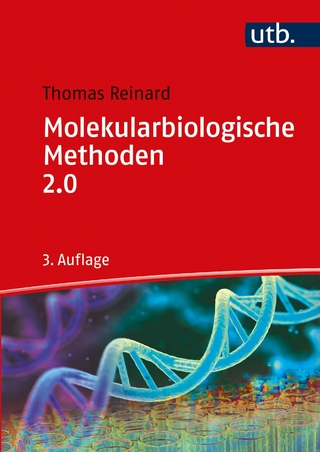
Nature's Gift to Neuroscience
CRC Press (Verlag)
978-1-032-14522-8 (ISBN)
In the 1960s, Sydney Brenner proposed to use the nematode worm Caenorhabditis elegans to discover the control mechanisms of animal development and to reveal how a small number of neurons generate different behaviours, giving birth to a vibrant community that uses this animal model for their studies. Brenner was aided in his aim by John Sulston, who mapped the C. elegans cell lineages – from a single cell to the multicellular adult – which transformed the field of developmental biology.
As a tribute to these two men, this book captures the perspectives of some of the early pioneers of the worm community, from Martin Chalfie, Robert Waterston and Donald Moerman to Catherine Rankin, Antony Stretton and John White. It also includes contributions from subsequent generations of the community, who explore the development and function of the C. elegans nervous system. This book features how this animal has become one of the best models for elucidating the biology of different sensory modalities and their complex behavioural outputs, or how this animal’s survival strategies have contributed to our understanding of ageing and neurodegeneration. Thus, this volume documents the development of the C. elegans neuroscience field, from infancy to maturity.
The chapters in this book were originally published as a special issue of the Journal of Neurogenetics.
Chun-Fang Wu is Editor-in-Chief of the Journal of Neurogenetics. He has conducted neurobiological research in Drosophila, applying genetic, cell biological, physiological, and behavioural techniques in the studies. Joy Alcedo is Guest Editor for the C. elegans special issue of the Journal of Neurogenetics. Her research focuses on the sensory and neuromodulatory influences on C. elegans development and survival programs.
Introduction: Nature's gift to neuroscience Part 1: The early years of C. elegans neurogenetics 1. My life with Sydney, 1961–1971 2. John Sulston (1942–2018): a personal perspective 3. A touching story 4. But can they learn? My accidental discovery of learning and memory in C. elegans 5. Of worms and men Part 2: Nervous system development 6. A perspective on C. elegans neurodevelopment: from early visionaries to a booming neuroscience research 7. Neuronal specification in C. elegans: combining lineage inheritance with intercellular signaling 8. Molecular mechanisms governing axonal transport: a C. elegans perspective 9. C. elegans MAGU-2/Mpp5 homolog regulates epidermal phagocytosis and synapse density 10. Synaptic remodeling, lessons from C. elegans 11. What about the males? the C. elegans sexually dimorphic nervous system and a CRISPR-based tool to study males in a hermaphroditic species 12. Cell-type-specific promoters for C. elegans glia Part 3: From inputs to outputs 13. C. elegans: a sensible model for sensory biology 14. Temperature signaling underlying thermotaxis and cold tolerance in Caenorhabditis elegans 15. Mechano-gated channels in C. elegans 16. What can a worm learn in a bacteria-rich habitat? 17. C. elegans aversive olfactory learning generates diverse intergenerational effects Part 4: Social and sexual behaviors 18. Social and sexual behaviors in C. elegans: the first fifty years 19. Small molecule signals mediate social behaviors in C. elegans 20. Intraguild predation between Pristionchus pacificus and Caenorhabditis elegans: a complex interaction with the potential for aggressive behaviour 21. Plasticity of pheromone-mediated avoidance behavior in C. elegans Part 5: Quiescence and sleep 22. Worms sleep: a perspective 23. Cellular damage, including wounding, drives C. elegans stress-induced sleep 24. Orcokinin neuropeptides regulate sleep in Caenorhabditis elegans 25. Discriminating between sleep and exercise-induced fatigue using computer vision and behavioral genetics 26. The OptoGenBox – a device for long-term optogenetics in C. elegans Part 6: Survival, aging and disease 27. Neuromodulators: an essential part of survival 28. Neuroendocrine control of lipid metabolism: lessons from C. elegans 29. The discovery and consequences of the central role of the nervous system in the control of protein homeostasis 30. Host-microbe interactions and the behavior of Caenorhabditis elegans 31. Neurogenetics of nictation, a dispersal strategy in nematodes 32. Regulatory systems that mediate the effects of temperature on the lifespan of Caenorhabditis elegans 33. The contribution of C. elegans neurogenetics to understanding neurodegenerative diseases Part 7: Worm photo and art gallery 34. A journey to ‘tame a small metazoan organism’, seen through the artistic eyes of C. elegans researchers
| Erscheinungsdatum | 18.04.2024 |
|---|---|
| Verlagsort | London |
| Sprache | englisch |
| Maße | 210 x 280 mm |
| Gewicht | 453 g |
| Themenwelt | Naturwissenschaften ► Biologie ► Genetik / Molekularbiologie |
| Naturwissenschaften ► Biologie ► Humanbiologie | |
| Naturwissenschaften ► Biologie ► Zoologie | |
| ISBN-10 | 1-032-14522-6 / 1032145226 |
| ISBN-13 | 978-1-032-14522-8 / 9781032145228 |
| Zustand | Neuware |
| Informationen gemäß Produktsicherheitsverordnung (GPSR) | |
| Haben Sie eine Frage zum Produkt? |
aus dem Bereich


